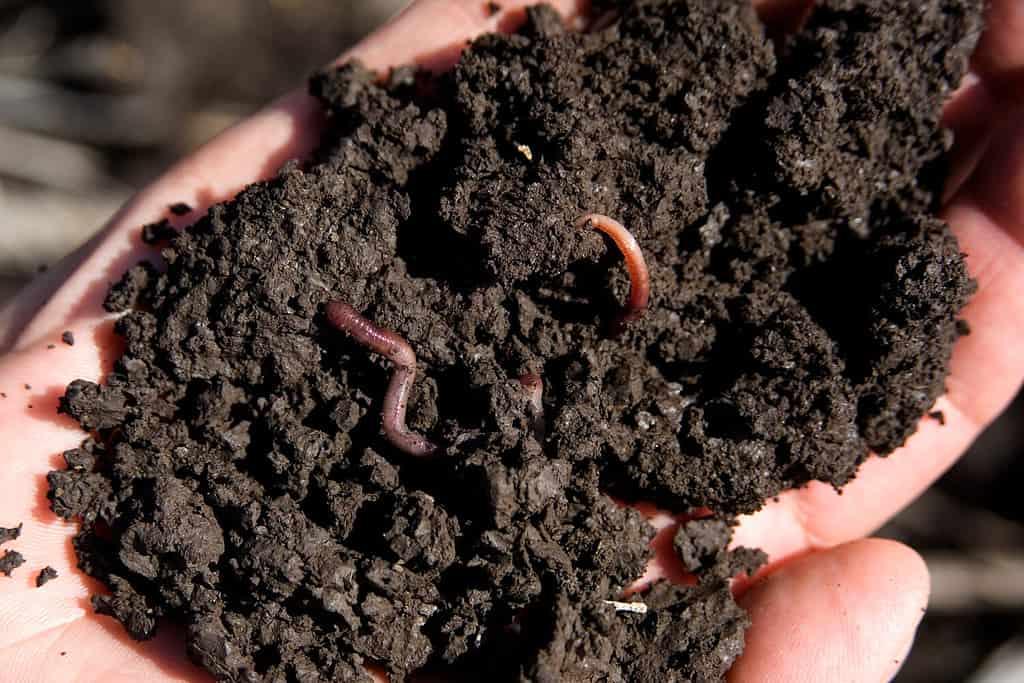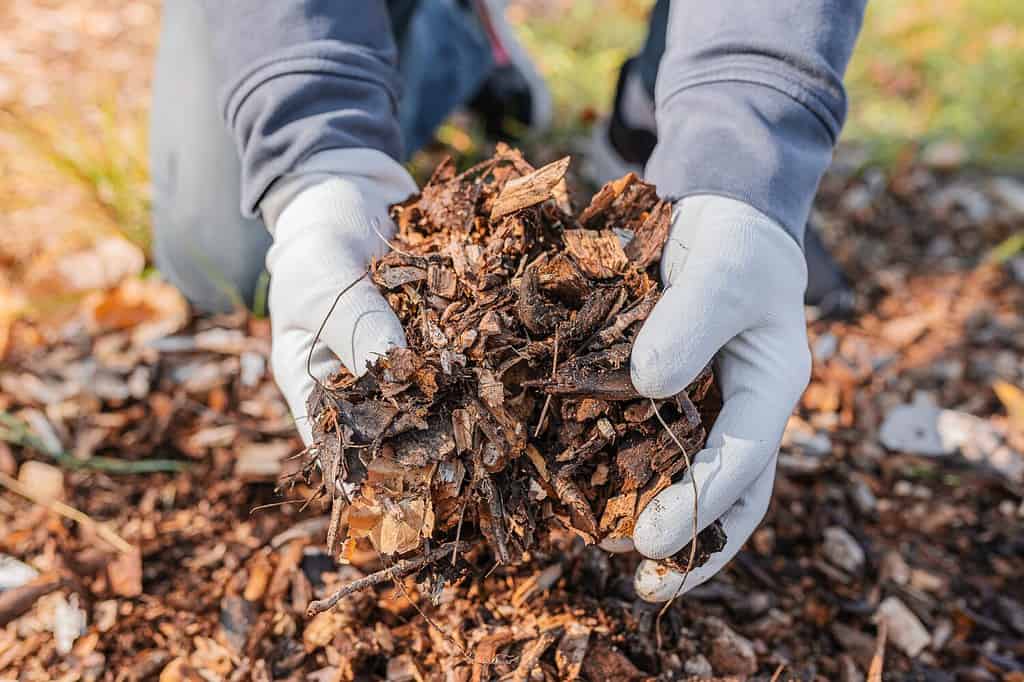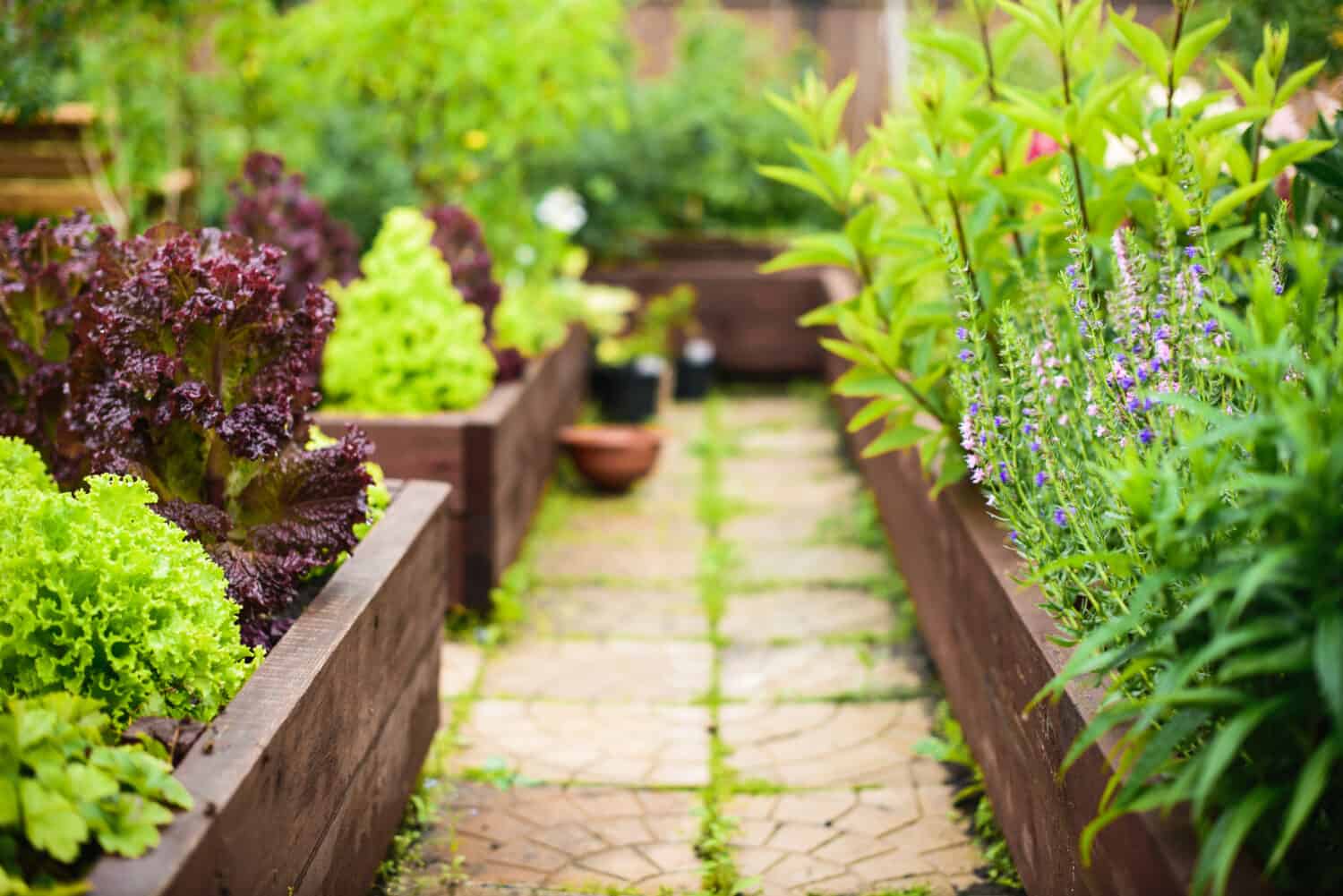Topsoil, mulch, and compost differences are extensive when you consider what each is useful for in the garden. If you’re new to gardening, the distinctions among the three are important to know, especially when prepping for your first planting season, whether it’s a flower garden, landscaping, or for sustenance.
Now, despite the fact that there are key differences between topsoil, mulch, and compost, doesn’t mean you need to use them in singular terms. In fact, the best way to benefit from each one is to use all of them together.
We put this guide together so you will better understand each one and the role it plays in your outdoor project. We’ll cover the uses for each in landscaping and gardening, whether the latter is a flower garden or a vegetable garden. If you’re looking for a way to step up your gardening knowledge, stick around and get to know the distinct and key differences to make your garden flourish!
1. Topsoil, Mulch, and Compost Differences in Appearance and Texture

Compost soil and organic plant fertilizer on hand for planting.
©Singkham/Shutterstock.com
First and foremost, let’s start with the obvious differences such as how each one looks and the texture distinctions as well. Each has its own uses though some of those uses can overlap.
Topsoil
As the name implies, topsoil is the upper layer, nutrient-rich, and the first thing a plant root experiences in the plant’s life cycle (aside from water). Topsoil is crucial. Without a solid topsoil layer that’s full of nutrients, water, and a small amount of organic matter, a seed may not germinate.
The interesting thing about topsoil is that it has compost in it. If you look at a small pile of topsoil and a small pile of compost, side-by-side, you’ll notice that some of the visual elements of compost are also a part of the topsoil, albeit in smaller samples.
As it turns out, topsoil, mulch, and compost differences aren’t always as drastic as you might think. At first glance, topsoil resembles a richer, thicker soil than most people are used to seeing and walking on. For the most part, topsoil is simply soil with compost mixed in.
Compost
Compost is nothing more than natural materials that are decomposed into an organic material you can use in your garden. In appearance and texture, it’s far more porous than topsoil and the elements it consists of are often larger.
Compost is usually black and dark brown, full of small twigs, leaves halfway through decay, and other materials partially or fully going through the process of decay. Compost is usually manufactured and packaged for sale by agricultural businesses or you can make the stuff in your backyard with a composter.
Mulch
Mulch is very different from topsoil and compost, though it does share use with compost. There are a ton of different mulch types out there, so the texture and appearance of mulch varies wildly. Usually, mulch consists of machine-disintegrated wood, wood shavings, or bark shavings compiled into a bulk supply.
However, you can get mulch from piles of cut grass or pine needles you rake into a large pile. While neither may qualify for the exact definition of mulch, they have uses as mulching material and fall under the same category.
2. Topsoil, Mulch, and Compost Uses

Healthy, rich soil, full of
earthworms
.
©Alf Manciagli/Shutterstock.com
Each of the three has very distinct and different uses. While you might try to substitute one for the other, it will never quite work out the way you want to, thanks to what each has to offer.
Topsoil
Topsoil, though rich with nutrients and some organic matter, is mostly not for growing plants as it is for raising garden beds. Alone, it’s not as useful as compost and possibly not as useful as mulch. However, it’s an excellent material for formulating your first garden bed, layering the top end, and squaring things off.
In a nutshell, it’s a useful tool for prettying things up while also offering a solid level of nutrients for freshly planted vegetables, flowers, etc. While it provides better aeration, water retention, and drainage, it doesn’t accomplish this as well as compost does.
Compost
The uses for compost are many and varied. It’s kind of like a soil upgrade, combining a number of useful processes that help plants thrive. For one, the nature of its composition improves water drainage in the soil. Too much water sitting in one place in a garden is a bad thing.
It also adds a load of organic materials that plants thrive on because it’s basically a potent fertilizer for the top of your soil. The most interesting use for compost is its dual nature in terms of water. While it increases the drainage capabilities of your soil, it also increases water retention. Weird, huh?
What it’s actually doing is reversing water pooling while retaining water abundance through absorption. Compost is also good for improving overall soil conditions and reducing compaction in your garden.
Mulch
Topmost, mulch, and compost differences are at their most extravagant when it comes to mulch. Topsoil is your primary top layer. However, mulch goes in over the top of topsoil. Mulch essentially improves the structure of your soil by protecting it from the elements.
It’s also a matter of aesthetics. Mulch makes your garden or landscaping project look a lot better and more attractive to those who pass by and see it. There are also two types of mulch—the non-organic material most often sold and packaged by major brands and the organic stuff you can make from home.
The latter includes things like grass clippings, piles of leaves, or piles of pine needles.
3. Topsoil, Mulch, and Compost Manufacturing

A handful of leaf and twig mulch.
©larisa Stefanjuk/Shutterstock.com
How these materials are made (by either yourself or mass production) is very different as well. All three are packaged and sold as distinctly separate materials for distinctly separate jobs.
Topsoil
In terms of mass production, topsoil is packaged as a mixture of compost and mineral soil, with a variety of ratios depending on the consumer’s needs. For the most part, however, compost within topsoil material is often well below the 50% mark.
There are a number of considerations that businesses consider when manufacturing topsoil for packaging and sale to a specific subset of consumers.
- pH² levels between 6 and 8.5
- <4 CO² evolution rate
- Reduction of chemical contaminants that meet EPA Class A specs
- A small particle size (must pass 90%+ through a 3/8” sieve
- 30% to 60% moisture levels in the soil
- 30% to 60% organic matter content in the mix
- Less than .05% of physical contaminants
Now, not all companies follow this protocol to the T, but most reputable brands will try to do all of the above to one degree or another. It’s possible to make your own topsoil, though it requires a meticulous hand and considerable time and attention.
You can manufacture your own compost or introduce fertilizers into soil that contains zinc, sulfur, chlorine, iron, and copper. You also have to monitor and control the pH levels as you go. You’ll have to add and remove organic matter, moisture, and air. You’ll also need to physically manipulate it throughout the process to retain topsoil’s aeration capabilities.
Compost
Unlike topsoil, compost is much easier to manufacture on your own. However, there are still essential details you have to pay attention to throughout the process. While most gardeners purchase compost that’s already made, it’s far more fun to make your own. Plus, you can control what goes into it based on your needs.
All you need to make your own compost is a composter. How much you want to make may require more than one or a really large composter. While you can make compost on the ground, it’s much more difficult to control heat and water consistency. Of all the topsoil, mulch, and compost differences, manufacturing your own compost is the most beneficial.
Not only is compost excellent for your garden, it’s also an effective way of reducing waste in your home and improving your eco-friendly input and output. That’s because there are a number of things that go into it.
- Scraps and leftovers from fruits and veggies
- Eggshells
- Leftover coffee grounds and tea leaves
- Tea bags
- Lint from your dryer
- Newspaper
- Cardboard
- Mulch
- Napkins and paper towels
- Decaying leaves and rotten wood
With sufficient monitoring and attention to detail, you can consistently rotate in fresh compost and keep compost rolling out and into your garden.
Mulch
Topsoil, mulch, and compost differences aside, mulch is the easiest of the three (by far) to manufacture and apply on your own. That’s because of the vast variety of potential mulching materials. You can keep things simple by applying grass clippings, pine needles, or leaves to your garden, or you can take it to the next level.
One thing that connects compost to mulch is that the former can become the latter. If you take your excess compost and lay it out to dry, it will become a more efficient mulch material, though it will lose its compost benefits to the aging and drying process.
Just about any natural wood from trees or bark can become mulch. You will need a wood chipper to transform bark, branches, and chopped trees into the tiny wood chips that make up your mulch supply.
When you purchase mulch from a business, this is essentially all they’ve done, making it the least sensical of the three to purchase from a store, unless you live in a way that keeps you from accessing your own materials.
Final Thoughts on Topsoil, Mulch, and Compost Differences
Each one has its uses and, although some of them have overlapping usefulness, all three are required for a healthy and sustained garden. Not only do they offer an excellent starting point, but they also offer longevity, so long as you remain consistent with applying all three when necessary.
Another benefit to all three is that you can either purchase them or you can make your own. The only drawback is topsoil, which is the most difficult to manufacture in your backyard. However, if you have the time and patience to do it, you’ll have your very own garden paradise before you know it.
Thank you for reading! Have some feedback for us? Contact the AZ Animals editorial team.








